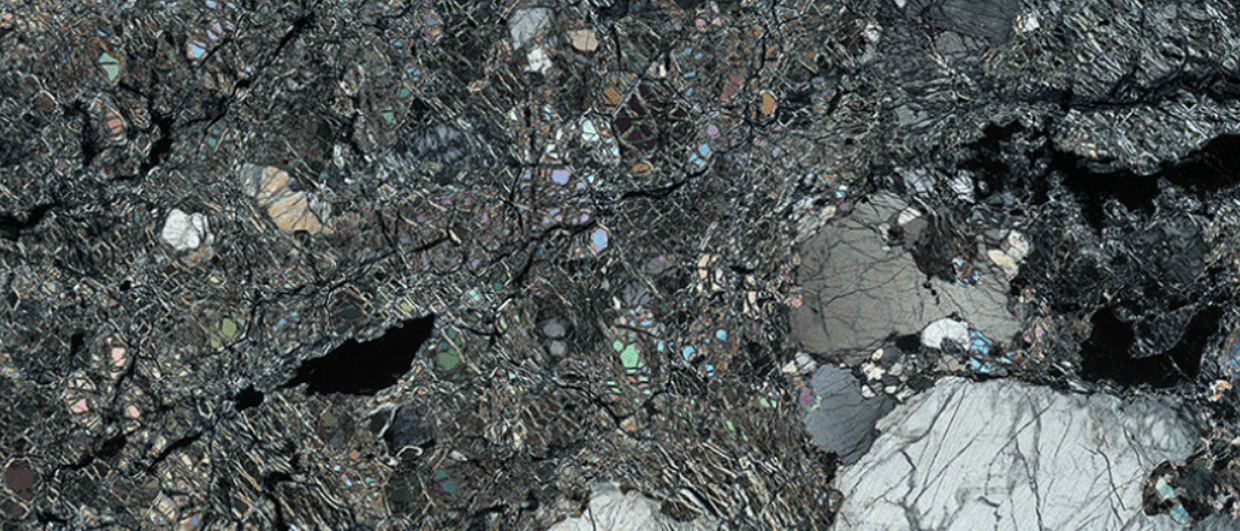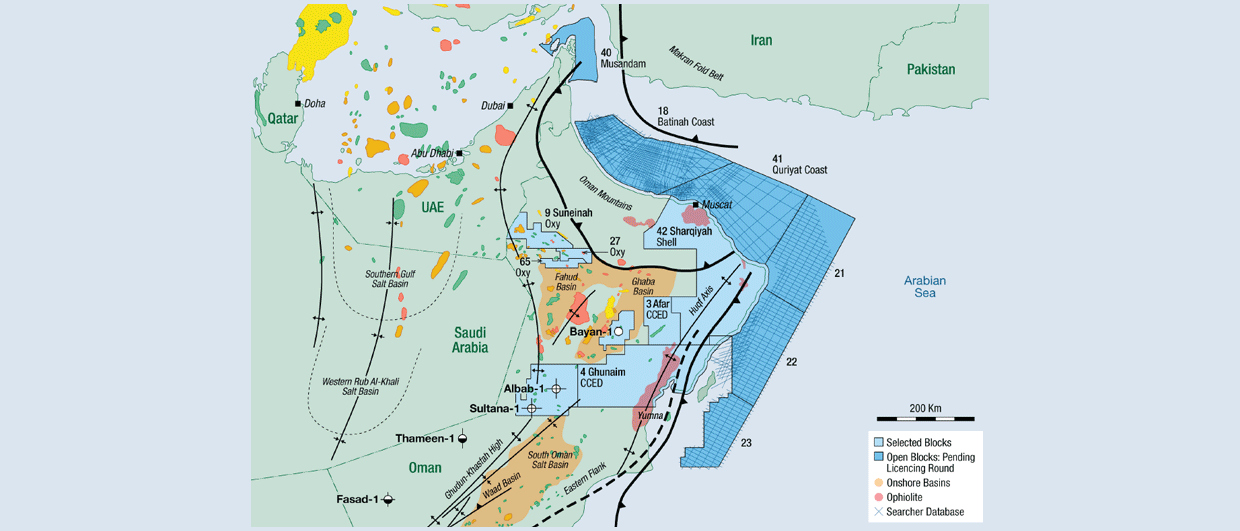Basement plays are found in quite a few areas globally and have been well studied and reported on. Norway, Yemen, Vietnam and China are amongst those places where oil is being produced from granites buried beneath source and overburden rocks. In all these cases, it is either fractures or a granite wash resulting from extensive subaerial weathering that is behind the formation of reservoir potential.
It is less common to find hydrocarbons in crystalline rocks that lack a phase of fracturing or subaerial exposure and weathering. Yet, an example has now been found.
In a well drilled in Block 56 in southern Oman, a series of Late Neoproterozoic alkaline intrusives was found in the Huqf Supergroup. In addition, it was shown that these rocks contain hydrocarbons.
The intrusives contain a Huqf-sourced oil with a light to medium viscosity appearance. Charging is believed to be coming from the cooler and shallower parts of the South Oman Salt Basin to the north and from beneath thick Tertiary cover in the basin to the south.
The igneous bodies were found to occur as both discrete and composite, decameter-scale sills separated by intervals of Huqf host rocks. Compositionally, they form a cogenetic suite of monzonites and syenites that can be related by fractional crystallization to a gabbro-diorite parental magma. Enrichment in alkalis and other large ion lithophile elements points to either an enriched mantle source or magma-crust interaction as the magma rose.
Read also: Late Neoproterozoic alkaline intrusives in Huqf sediments; a new reservoir target in southern Oman
The geochemical profile of the intrusives closely matches similarly-aged Neoproterozoic alkaline eruptives, which are now found as exotic volcanic blocks entrained in the salt diapirs of the Ghaba Salt Basin. It is, therefore, thought that the Block 56 intrusives and the contemporaneous extrusives are derived from the same magma source.
Porosities in excess of 10 % have been recorded in the intrusives. Rather than fracturing or subaerial exposure, in this case, the pore space was probably formed by dissolution as the primary ferromagnesian minerals were converted to biotite and ferroan dolomite. A short-lived, fault-controlled Cretaceous hydrothermal event contemporaneous with uplift and alkaline volcanic activity in the Masirah Ophiolite further north in the country is interpreted to be the driver for this.
The main question regarding the potential of the intrusives to act as a producing reservoir is the permeability of the rocks. As no permeability measurements were obtained, this still needs further work. However, with oil being proven in succession, some form of permeability likely exists, as migration into the rocks must have occurred at some point. It is, therefore, worth considering these intrusive rocks as a candidate for unconventional production. Not only in Oman but possibly elsewhere, too.





